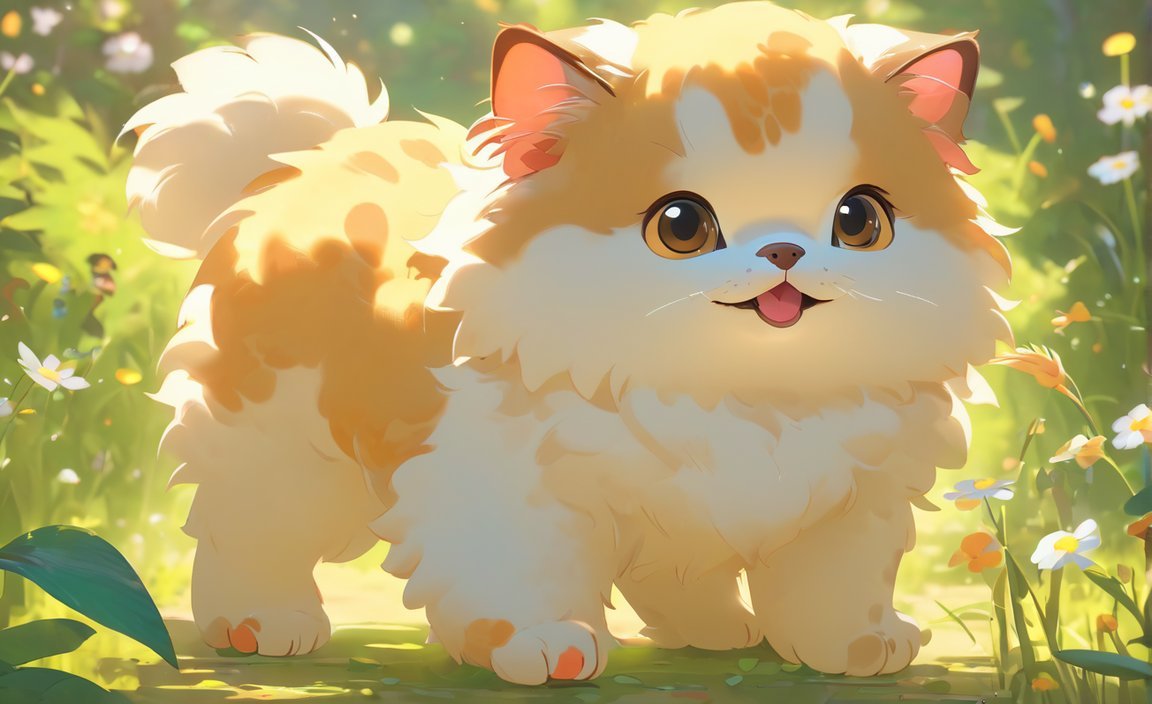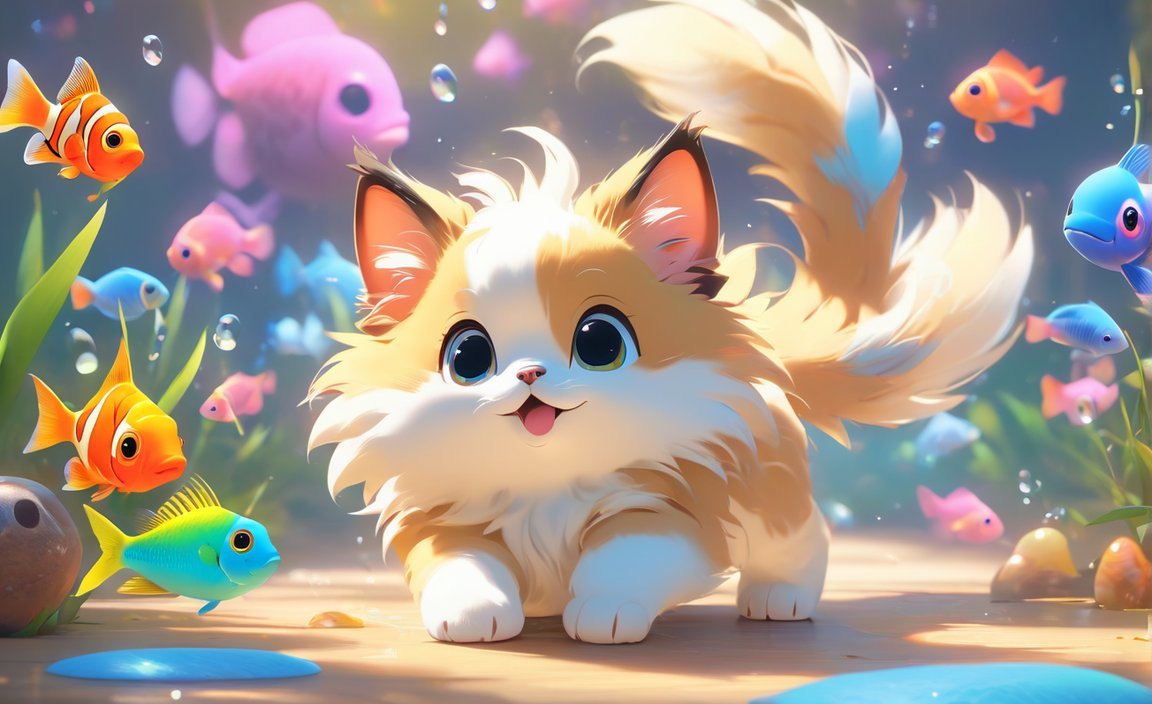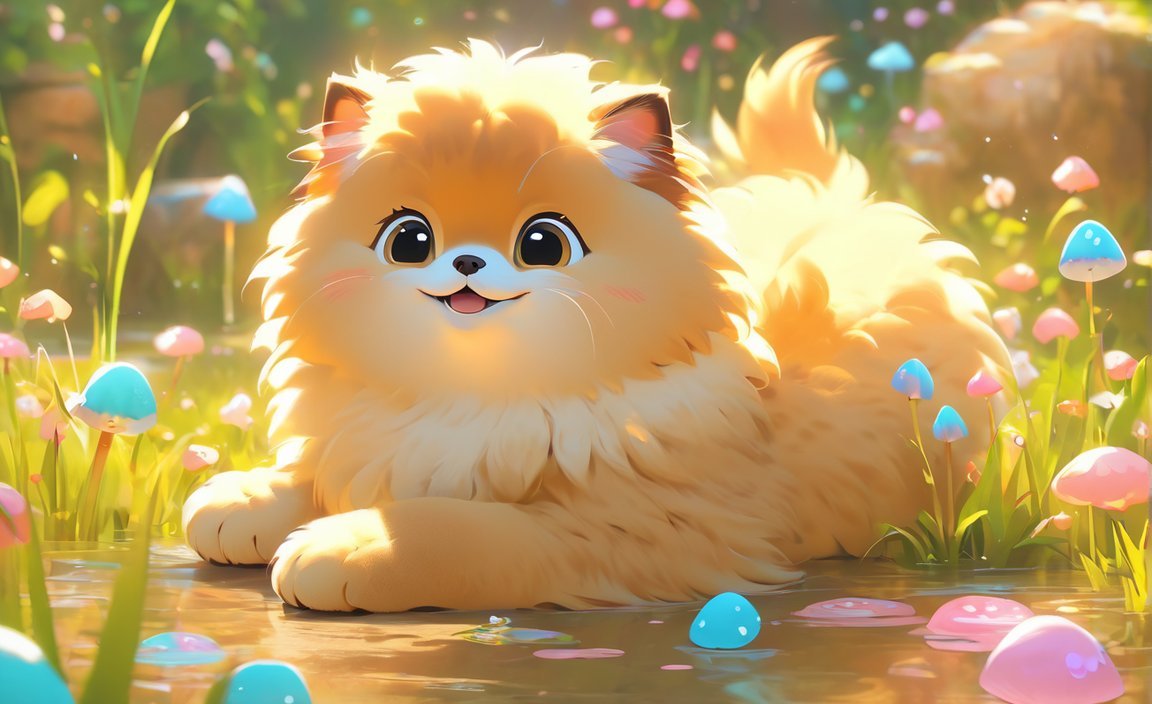Curious about the fascinating world of pets? Look no further! In this article, we delve into the captivating realm of our furry and feathery friends as we uncover 10 fun facts about pets. From surprising behaviors to curious quirks, prepare to be amazed by the incredible wonders of our beloved animal companions. So, let’s embark on this delightful journey and discover the intriguing secrets that make our pets truly extraordinary.

Key Takeaways:
- Dogs have a sense of smell 40 times better than ours.
- Cats can jump up to seven times their height and have over one hundred vocal sounds.
- Cats spend 70% of their life sleeping.
- A pack of kittens is called a kindle, while a pack of adult cats is called a clowder.
- Pet ownership was historically a sign of wealth and free time.
- Dogs were the first domesticated animal and the first pet of our human ancestors.
- Birds have hollow bones.
- In the United States, there are more households that have dogs than cats.
- Most varieties of lizard can detach their own tails.
- It’s illegal to own a hamster in Hawaii.
- Turtles are one of the longest living pets.
- The oldest living tortoise is named Jonathan.
- When rabbits are happy, they jump around and flick their head and feet.
10 Fun Facts About Pets
Pets have been our faithful companions for centuries, bringing joy and happiness to our lives. These fascinating creatures never fail to surprise us with their unique characteristics and behaviors. If you’re a pet lover looking to expand your knowledge, here are 10 fun facts about pets that are bound to amaze you:
1. Dogs: The Masters of Smell
Did you know that dogs have a sense of smell 40 times better than ours? Their remarkable olfactory abilities allow them to detect scents hidden to the human nose. That’s why dogs are often used for search and rescue missions and as service animals to aid individuals with specific medical conditions.
2. Cats: The Super Jumpers with a Language of their Own
Cats possess impressive athletic abilities. They can jump up to seven times their height—which explains how they effortlessly reach those high shelves! Additionally, cats have over one hundred vocal sounds in their repertoire. From meows to purrs, they use their unique language to communicate their needs and emotions.
3. Cats: Masters of the Lazy Lifestyle
Cats are known for their love of lounging, and it turns out they take their relaxation seriously. On average, cats spend 70% of their life sleeping! They are experts in the art of napping, finding the coziest spots in the house to curl up and dream their days away.
4. Kittens and Adult Cats: The Power of Names
A group of adorable kittens is called a kindle, while a group of adult cats is referred to as a clowder. These unique terms showcase the collective nature of these independent felines, whether they’re frolicking as playful kittens or lazing around as mature cats.
5. Historical Significance of Pet Ownership
Throughout history, owning pets was a sign of wealth and free time. In ancient times, only the upper class could afford the luxury of having pets, which often included exotic creatures like birds, elephants, and monkeys. Today, pets have become more accessible to people from all walks of life, bringing comfort and companionship to millions of households worldwide.
6. Dogs: Our First Domesticated Friends
Dogs hold the honor of being the first domesticated animal and the first pet of our human ancestors. Over tens of thousands of years, humans and dogs formed a unique bond, built on trust, companionship, and shared adventures. From guarding our homes to assisting us in work and play, dogs have proven to be the ultimate loyal companions.
7. Birds: Unique Bone Structure
While most animals have solid bones, birds have hollow bones. These lightweight bones allow birds to soar through the air with ease, making them nature’s incredible aviators. This unique skeletal structure enables birds to achieve their remarkable feats of flight, spanning vast distances and reaching towering heights.
8. Dogs vs. Cats: The Ultimate Showdown
When it comes to pet preferences in the United States, dogs slightly outnumber cats. In millions of households across the country, canine friends are cherished members of the family, with their loyal and affectionate nature winning hearts. However, that’s not to say that the independent and mysterious charm of cats doesn’t have its dedicated fan base!
9. Lizards: The Art of Regeneration
Many varieties of lizards possess the extraordinary ability to detach their own tails. This unique defense mechanism allows lizards to escape from predators. While regenerating a new tail takes time, it’s a remarkable adaptation that ensures their survival in the face of danger.
10. Quirky Laws: No Hamsters in Hawaii
Did you know that owning a hamster is actually illegal in Hawaii? Due to the fear of non-native animals escaping and damaging the delicate ecosystem, Hawaii prohibits the ownership of these small furry creatures. So, if you’re planning a move to the beautiful islands, you might have to forego having a hamster as a pet.
Pets have an incredible ability to captivate us with their unique traits and behaviors. Whether it’s the astonishing sense of smell possessed by dogs, the acrobatic prowess of cats, or the fascinating features of birds and lizards, they continue to be a source of wonder and joy in our lives. So, next time you spend time with your four-legged or winged friend, take a moment to appreciate these 10 fun facts about pets that make them so extraordinary.
Here are some fun facts about being a vet that you might not know:
– Did you know that being a veterinarian is not just about taking care of cats and dogs? Check out these 10 fun facts about being a vet to discover the diverse range of animals they work with. 10 fun facts about being a vet
If you’re interested in becoming a veterinarian, you’ll definitely want to check out these 10 fun facts about being a veterinarian. From saving lives to unique challenges, find out what it takes to be a vet. 10 fun facts about being a veterinarian
Veterinarians play a crucial role in the well-being of animals, but there’s so much more to learn about this rewarding profession. Explore these 10 fun facts about veterinarians and discover the fascinating world of animal care. 10 fun facts about veterinarians
If you’ve ever wondered what it’s like to work as a vet, here are 10 fun facts about vets that will give you a glimpse into their daily lives. From cuddling cute animals to handling emergencies, being a vet is anything but boring. 10 fun facts about vets
Therapy dogs bring joy and comfort to people in need, but did you know they have some interesting facts too? Discover these 10 fun facts about therapy dogs that will make you appreciate their incredible work even more. 10 fun facts about therapy dogs
Dogs and cats are beloved pets, but there’s more to them than meets the eye. Dive into these 10 fun facts about dogs and cats to learn some surprising and intriguing information about our furry friends. 10 fun facts about dogs and cats
Have you ever wondered how animals’ teeth differ from ours? Explore the world of animal teeth with these 10 fun facts that will leave you amazed by nature’s diversity. 10 fun facts about animal teeth
3. Parrots are highly intelligent and can learn to mimic human speech and even solve complex puzzles.
Parrots are truly fascinating creatures. Not only are they stunning with their vibrant feathers and charming personalities, but they also possess incredible intelligence. One of the most captivating abilities of parrots is their talent for mimicking human speech. But how do they do it? Let’s dive into the secrets behind this remarkable phenomenon.
Intelligence and Learning Abilities of Parrots
Parrots are known for their high level of intelligence. They have the cognitive ability to learn, remember, and interpret sounds, words, and phrases. Their remarkable learning capabilities allow them to mimic various sounds in their environment, including human speech.
Parrots are highly social creatures, living in groups where they learn from each other. They observe and imitate the vocalizations of their fellow parrots, as well as humans, to communicate and interact. This social learning aspect plays a crucial role in their ability to mimic human speech.
Mimicry as a Form of Communication
Parrots mimic human speech as a means of communication and self-expression. By imitating human voices and words, they can convey their needs, desires, and emotions to their human caretakers. This vocal mimicry strengthens the bond between parrots and humans, as it facilitates interaction and understanding.
Similarities Between Parrots and Humans
Believe it or not, parrots possess vocal organs that are capable of producing sounds in a manner similar to humans. Their avian vocal apparatus, known as the syrinx, allows for diverse vocalizations and intricate sound production. This anatomical similarity between parrots and humans contributes to their ability to mimic human speech accurately.
Complex Neural Mechanisms
The ability of parrots to mimic human speech is supported by complex neural mechanisms. Their brains contain specialized regions that are responsible for vocal learning, such as the medial magnocellular nucleus of the anterior nidopallium (MMAN). These brain regions enable them to process and imitate the sounds they hear, including human speech.
Implications for Conservation
While the parrots’ ability to mimic human speech is fascinating, it is essential to consider its impact on their conservation. The demand for pet parrots has led to population declines in the wild, as birds are captured for the pet trade. Understanding the natural behaviors and cognitive abilities of parrots, including their mimicry skills, can help raise awareness about their conservation needs.
Key Takeaways:
– Parrots are highly intelligent creatures with exceptional learning abilities.
– They can mimic various sounds in their environment, including human speech, through social learning.
– Parrots mimic human speech as a form of communication and self-expression.
– The anatomical similarity between parrots and humans enables them to mimic human speech accurately.
– Complex neural mechanisms in the parrot’s brain support their ability to imitate human speech.
– Conservation efforts should prioritize protecting parrot species and their natural behaviors.
Sources:
– Bird Pursuits
– Scientific American
4. Goldfish have a remarkable ability to remember and recognize their owners.
Have you ever wondered if your goldfish can remember you? Well, prepare to be amazed because goldfish actually have an astonishing ability to remember and recognize their owners. It’s not just a myth!
Research has shown that goldfish can remember things for several months, debunking the belief that they have a mere three-second memory span. In fact, these lovely aquatic pets have the capacity to recognize and distinguish between different people based on visual and olfactory cues. That means your goldfish can tell you apart from your friends and family!
So, how do they do it? Goldfish have impressive memories and are often used as a model for studying memory and learning in fishes. They can remember tasks and problem-solving techniques even after weeks or months, defying their reputation for having short attention spans.
But it doesn’t stop there. Goldfish can also remember their surroundings and navigate with familiarity, thanks to Oxford University scientists who conducted studies confirming their good memories. It’s truly fascinating to see these little fish demonstrate their cognitive abilities.
Remember, though, that goldfish belong to a diverse group with over 125 varieties. Each type has its own unique characteristics, including their memory capacities. So, you might want to get to know your specific goldfish and observe their recognition skills.
In conclusion, goldfish possess an incredible capacity to remember and recognize their owners, proving that these aquatic pets are far more than just beautiful decorations in a tank. They are intelligent creatures with surprising cognitive abilities that continue to intrigue researchers and pet enthusiasts alike.
Key Takeaways:
– Goldfish have the ability to recognize and remember their owners based on visual and olfactory cues.
– They can remember things for several months, debunking the myth of a three-second memory span.
– Goldfish have impressive memories and can remember tasks and problem-solving techniques.
– Different goldfish varieties may have different memory capacities.
– Research conducted by Oxford University has confirmed goldfish’s ability to navigate their surroundings.
Sources:
– American Oceans
– FishGenix – Can Goldfish Recognize Their Owners?
5. Rabbits have teeth that never stop growing, and they need to continuously chew on objects to wear them down.
Rabbits are known for their adorable floppy ears and fluffy tails, but did you know that they also have a unique dental feature? Yes, that’s right! Rabbits have teeth that never stop growing throughout their lives. This continuous growth is fascinating and serves a crucial purpose for these furry creatures.
So, why do rabbits’ teeth never stop growing? Well, it all comes down to their dental anatomy and feeding habits. Rabbits have three types of teeth: two sets of incisors and one set of molars. The upper incisors are shaped like pegs and are responsible for cutting and clipping food, while the lower incisors act as a counter surface. The molars, on the other hand, are used for grinding and chewing the food.
But here’s the catch – rabbits have a diet that consists mainly of roughage, such as grass, hay, and vegetation. These fibrous foods naturally wear down their teeth as they chew and grind. It’s like a built-in dental maintenance system! Proper wear and alignment of the teeth prevent a condition called malocclusion, where the teeth don’t meet together correctly.
So, why is malocclusion such a big deal? Well, it can have serious consequences for rabbits. When their teeth don’t meet properly, it can lead to various dental problems. And if a rabbit is unable to eat due to malocclusion, its digestive system can stop moving, which can be life-threatening.
To give you an idea of how fast a rabbit’s teeth grow, here’s an astonishing statistic – their teeth can grow around 1 centimeter per month if they meet properly and are worn away. But if the teeth are misaligned, they can grow as much as 1 millimeter per day! That’s why proper wear and alignment of the teeth are crucial.
Now, you might be wondering, what causes malocclusion in rabbits? Well, one of the significant factors is a poor diet. Rabbits require a balanced diet consisting mainly of hay, fresh vegetables, and a controlled amount of pellets. The rough texture of hay plays a vital role in wearing down their teeth, preventing overgrowth and malocclusion.
It’s essential to recognize the signs of malocclusion in rabbits for early intervention. Difficulty eating, weight loss, drooling, and teeth grinding are common signs to look out for. Any changes in their eating habits or behavior should be monitored closely as they may indicate dental issues.
To maintain good dental health in rabbits, providing a balanced diet and regular veterinary check-ups are crucial. While rabbits don’t need their teeth brushed like cats or dogs, a healthy diet and proper wear and alignment of their teeth are essential for preventing dental problems.
Now that you know rabbits have teeth that never stop growing and the importance of proper wear and alignment, you have a fascinating fact to share with your fellow pet enthusiasts. Rabbits truly are unique creatures with their constantly growing teeth, reminding us of the intricacies of the animal kingdom.
Key Takeaways:
– Rabbits have teeth that never stop growing throughout their lives.
– Rabbits have two sets of incisors and one set of molars for cutting, clipping, grinding, and chewing food.
– The fibrous nature of their diet, including grass and hay, naturally wears down their teeth.
– Proper wear and alignment of teeth prevent malocclusion, a condition where the teeth don’t meet together correctly.
– Malocclusion can have serious consequences for rabbits, including difficulty eating and potentially life-threatening digestive issues.
– Recognizing signs of malocclusion, such as difficulty eating, weight loss, drooling, and teeth grinding, is crucial for early intervention.
– Providing a balanced diet and regular veterinary check-ups are vital for maintaining good dental health in rabbits.

FAQ
Q1: Can dogs really smell better than humans?
A1: Yes, dogs have a sense of smell that is 40 times better than ours. Their heightened sense of smell allows them to detect and distinguish a wide range of scents that are undetectable to humans[^1^].
Q2: Are cats really able to jump seven times their height?
A2: Yes, cats have incredible jumping abilities and can jump up to seven times their own height. This impressive skill is due to their flexible spines and powerful hind legs[^1^].
Q3: Why do cats sleep so much?
A3: Cats are known for being champion sleepers, as they spend approximately 70% of their lives sleeping. This behavior is a result of their natural instincts as predators, conserving energy for hunting and bursts of activity[^3^].
Q4: What is a group of kittens called?
A4: A pack of kittens is called a kindle. It is an adorable term that accurately captures the cuteness of a group of playful and mischievous kittens. On the other hand, a pack of adult cats is called a clowder[^1^].
Q5: Is it true that owning pets used to be a sign of wealth and free time?
A5: Yes, historically, pet ownership was seen as a sign of wealth and free time. In the past, owning and caring for pets was a luxury that only the affluent could afford. Over time, pets have become more accessible and popular among people from all walks of life[^4^].
- Senior at What Age: Benefits & Eligibility Guide - March 29, 2025
- Unlocking Senior Benefits: How Old is a Senior? Your Complete Guide - March 29, 2025
- Master Russian Politeness:A Guide to Saying Please - March 29, 2025
















